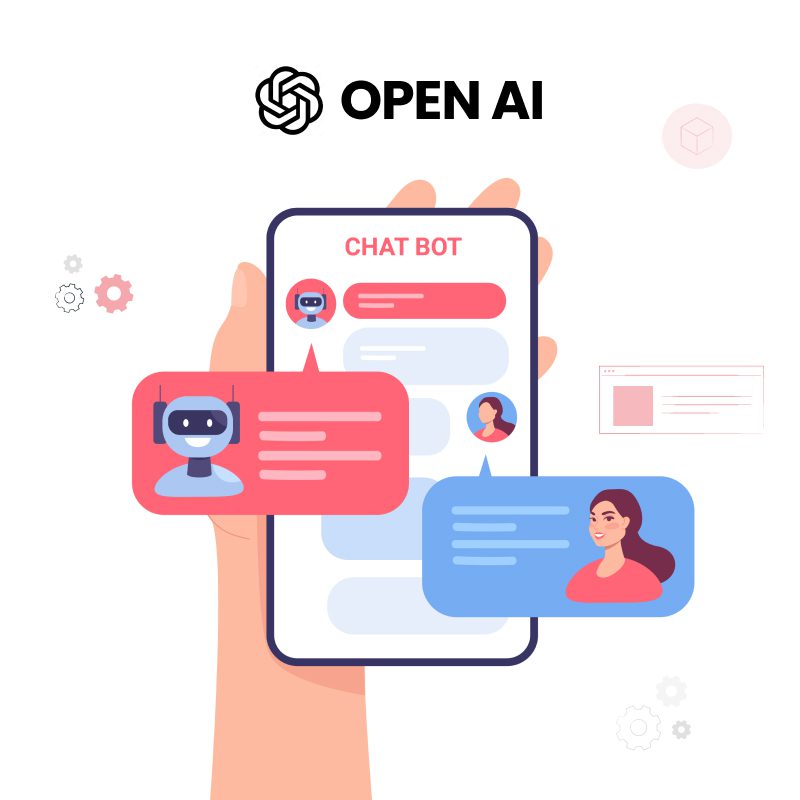Chatbots and Gen AI Combined
In the dynamic landscape of customer support, next-generation chatbots, empowered by Gen AI, are redefining the way businesses interact with their customers. These advanced chatbots go beyond scripted responses, leveraging the capabilities of generative AI to humanize interactions, provide personalized assistance, and enhance overall customer satisfaction. How Gen AI models can create a customer profile and tailor an experience based on their preferences not only makes the experience more life-like but also more welcoming.
Humanizing Customer Support with Generative AI
Chatbots were inherently designed to be generic and static. Having an automated greeting with a generic exchange makes the experience universal and welcoming without needing to procure customer information. However, Gen AI introduces a technological potential that could radically change how chatbots operate with the capacity to take in new data to change their approach to customers.
Behavioral Analysis
What Generative AI brings to the table is their function to analyze user behavior and historical interactions to build detailed profiles. These details include verbiage the customer uses, frequently visited pages, purchasing history, and previous conversations held with the chat bot. This information allows next-gen chatbots to offer personalized recommendations, understand user preferences, and tailor responses based on individual customer characteristics.
Next-gen chatbots can undergo adaptive training using generative AI, allowing them to learn from new data and evolving user interactions. By leveraging predictive analytics, chatbots can anticipate user needs and preferences. Generative AI processes historical data to predict future interactions, ensuring that chatbots proactively provide relevant information or solutions before the customer explicitly requests them.
As an advanced AWS partner, we bring unparalleled expertise to architect, deploy, and optimize cloud solutions tailored to your unique needs.
User Feedback Analysis
Generative AI enables chatbots to analyze user feedback, understand sentiment, and adapt responses accordingly. This continuous learning loop ensures that chatbots improve over time, becoming more adept at addressing user needs and preferences.
Natural Language Understanding
The type of informal language the customer uses or how they structure their sentences can form an inconvenient barrier for the chatbot. Gen AI provides natural language understanding capabilities. Through thorough training, it enables chatbots to comprehend user queries in a more contextually aware manner. This method is more intuitive and helps to accomplish more fluid conversations with customers.
Context Retention
Unlike traditional chatbots, next-gen chatbots can retain context throughout a conversation and can understand the nuances of ongoing interactions, including references back to previous messages. By remembering context, newer chatbots will provide responses that are more consistent with the user’s intent.
Dynamic Content Generation
Gen AI has more recently been used for various forms of content generation. By incorporating Gen AI into chatbots, they can similarly construct promotional material or other media relevant to the course of their conversation with a customer. Beyond being able to draft promotional or advertising material on the fly, this can be applied towards building informative material.
Rich Media Integration
Next-gen chatbots can generate and incorporate rich media elements into conversations, such as images, videos, and interactive content. As previously discussed, this can either enhance the user experience with complex and tuned advertising to their interests or by making interactions more engaging and informative with graphics that could show statistics into the queries the customer has.

Real-time Content Updates
Generative AI allows chatbots to generate real-time content updates. Whether it’s the latest product information, news, or promotions, chatbots can dynamically generate and deliver current content, keeping customers informed and engaged. This same functionality could be integrated across multiple communication channels and websites. Next-gen chatbots can maintain a consistent context and user experience whether the interaction occurs on a website, mobile app, social media platform, or any other channel.
Voice and Speech Recognition
Chatbots could also take up space in phone calls, accepting incoming customer calls and engaging that way. Integrating generative AI with voice and speech recognition technologies enables chatbots to understand and respond to spoken language regardless of accent, cadences, or nuances in a person’s speech pattern. Should the users prefer verbal communication, this flexibility enables that option.
Proactive Issue Resolution
The loop by which Gen AI models learn from customer interaction is continuous. By analyzing user interactions and feedback, next-gen chatbots can proactively identify and resolve issues with their current model of customer interaction. This proactive approach enhances customer satisfaction by minimizing frustration and demonstrating a commitment to excellent service.
Ethical Concerns
The introduction of Generative AI technologies has been admittedly controversial and rocky. With the possibility of powered chatbots, the conversion over copyright infringement and plagiarism has the potential to break into conversations about customer and user privacy too. People do not like the idea that various groups are looking in at their online activity and constructing detailed profiles about them without their knowledge or consent. Ideally, models will have integrated policies designed to prevent the Gen AI’s overreach or at the very least notifications ensuring transparency in AI decision-making processes and addressing concerns related to data privacy and security contribute to building trust with users. How this will advance legally has yet to be seen.
Conclusion
Next-gen chatbots, fueled by the capabilities of generative AI, mark a significant evolution in customer support interactions. The humanization of conversations, personalization, dynamic content generation, and continuous learning contribute to a more seamless and satisfying customer experience. As businesses embrace the potential of next-gen chatbots, powered by the transformative capabilities of generative AI, they position themselves to meet the rising expectations of customers in the digital era.
Get Started Today!
At AllCode, our mission is to leverage our unique skillset and expertise to deliver innovative, top-tier software solutions that empower businesses to thrive in our world’s rapidly-evolving technological landscape.
Work with an expert. Work with AllCode


